Global high-mix volume high-speed Shenzhen PCBA manufacturer

Ru
9:00 -18:00, Mon. - Fri. (GMT+8)
9:00 -12:00, Sat. (GMT+8)
(Except Chinese public holidays)





Global high-mix volume high-speed Shenzhen PCBA manufacturer

Ru
9:00 -18:00, Mon. - Fri. (GMT+8)
9:00 -12:00, Sat. (GMT+8)
(Except Chinese public holidays)





HomePage > Blog > Knowledge Base > Use of Aluminum Substrates in PCB
Electronic devices keep getting smaller. At the same time, they are doing more. More power, more processing, more heat. That last part—heat—is where the real challenge begins.
In high-power circuits, heat is not just a byproduct. It’s a problem to solve. That’s where aluminum substrate PCBs come in. Also known as aluminum core PCB, they are built to pull heat away from sensitive components. They don’t just carry signals—they carry heat, out and down.
Compared to standard FR4 boards, aluminum substrates change the equation. They combine good thermal conductivity with solid mechanical strength.
You’ll find them in LED systems. For example, power converters and electric vehicles. Places where heat can’t be ignored. In those environments, managing thermal load is not optional—it’s the difference between stable performance and failure.
This post breaks it down. What are these boards? Why are they used? And what do engineers need to think about when designing with them?
It’s a PCB, but with metal at the core. Instead of fiberglass (FR4), it uses aluminum as the base layer. That single change makes all the difference.
Why? Heat. These boards are built to manage high temperatures without external cooling. No bulky heatsinks or extra fans.
Here’s the basic structure:
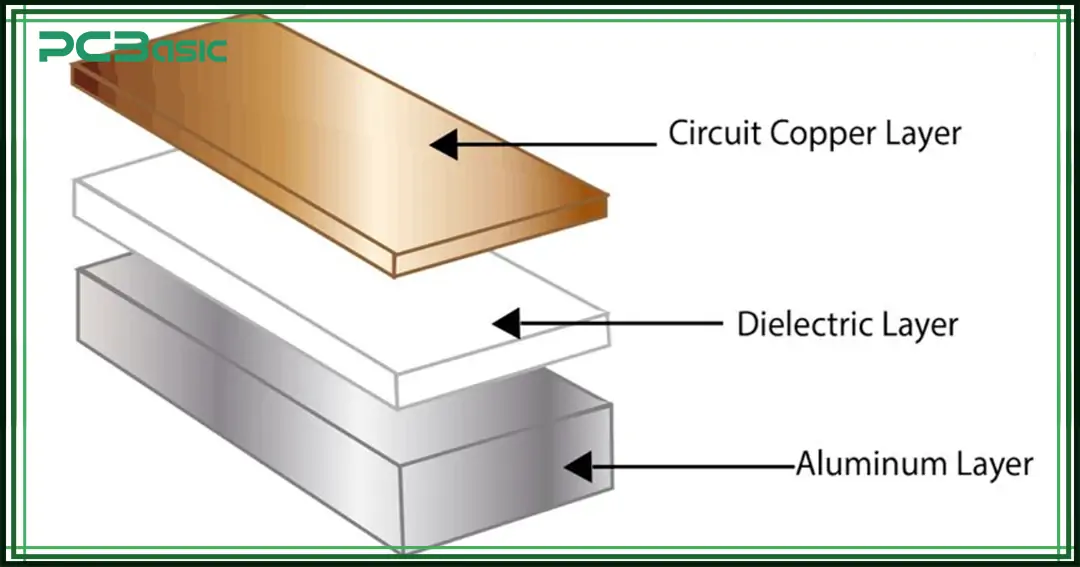
● Copper circuit layer on top – for electrical pathways.
● Dielectric layer in the middle – insulates but lets heat pass.
● Aluminum base at the bottom – draws heat away fast.
It’s not cosmetic. It’s functional. The aluminum acts as a thermal highway, moving heat out of the system efficiently. Most designs are single-sided. Components on top. Metal underneath. Multi-layer versions exist, but they are harder to build and cost more.
This isn't about flexibility. It’s about endurance. High power and heat. Yet small footprint. That’s the battlefield.
You might hear “metal core PCB” or aluminum core PCB. Same concept. Aluminum is the most common choice.
Why? It’s light, strong, cheap, and has excellent thermal conductivity.
The aluminum layer is typically 0.8 mm to 3 mm thick. Often anodized to resist corrosion and extend lifespan.
When your design can’t afford thermal failure, this is the board you pick.

Because heat is the enemy, in high-power circuits, poor thermal management isn't just a problem—it’s a failure point. Components overheat. Signals degrade. Lifespans drop.
Aluminum fixes that. Its thermal conductivity is around 205 W / (m·K). Compare that to FR4, which barely hits 0.4 W/m·K. That’s not even close.
Aluminum pulls heat away—fast and evenly.
But that’s not all it does:
● Dimensional Stability: It holds shape under thermal stress. No warping. No microcracks.
● EMI Shielding: The metal core naturally blocks interference. Clean signals, even at high frequencies.
● Mechanical Strength: Stronger than FR4. More impact-resistant. Built to survive rough handling.
● Cost Efficiency: Cheaper than ceramic, but delivers similar thermal performance.
Furthermore, with modern manufacturing, prototyping is faster and easier than ever. You can iterate without blowing the budget.
That’s why aluminum isn’t a niche choice anymore. It’s a standard for thermally demanding designs.
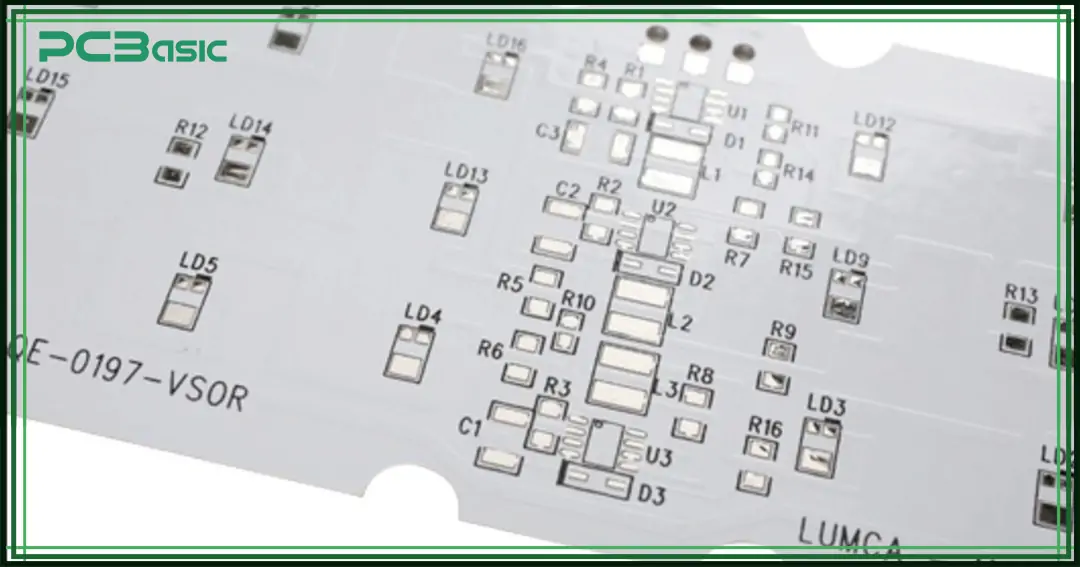
Here are the benefits of aluminum substrate:
Aluminum acts like a built-in heatsink. Heat transfers from components through the dielectric into the metal core. No external cooling needed in most cases.
Less thermal stress means longer component life. Stable temperatures reduce failure rates across the board.
Compact layout yet higher currents. Aluminum supports dene, high-wattage designs without overheating.
Aluminum PCB is rigid and impact-resistant. Moreover, it can handle vibration, compression, and physical stress better than FR4.
Despite the metal core, it's light. Much lighter than ceramic. Ideal for applications where weight matters—like LED panels or automotive modules.
CTE (Coefficient of Thermal Expansion) is closer to components like semiconductors. That means less mechanical stress during heating/cooling cycles.
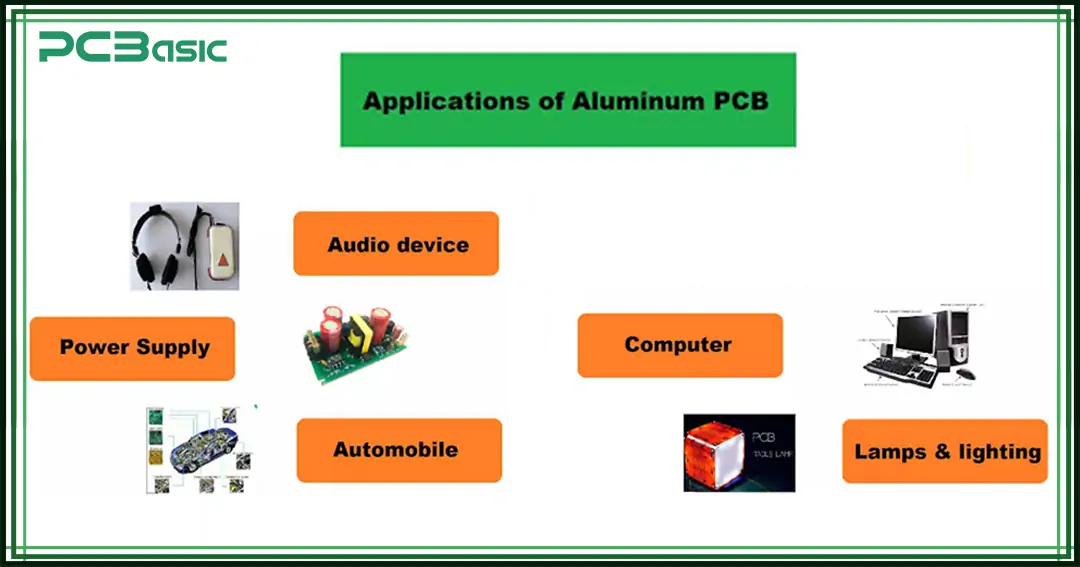
High-lumen LEDs run hot. Too hot for fiberglass. Aluminum pulls that heat out fast. That means brighter lights, less thermal drift, and longer lifespan.
Consider power inverters and SMPS. High voltage. They have high current and tight thermal margins. Aluminum PCBs help move heat out of the way—fast. Better efficiency, fewer thermal failures.
In modern vehicles, aluminum substrate PCBs are used in headlights, battery control systems, and engine control modules. They can withstand vibration, heat, and chemical exposure better than standard FR4 boards.
Base stations, network routers, and signal amplifiers often use aluminum PCBs to maintain stable performance during prolonged high-load operations.
From laptop power modules to high-performance gaming consoles, aluminum core PCB enable slimmer designs and quieter thermal management by reducing reliance on fans or external cooling.
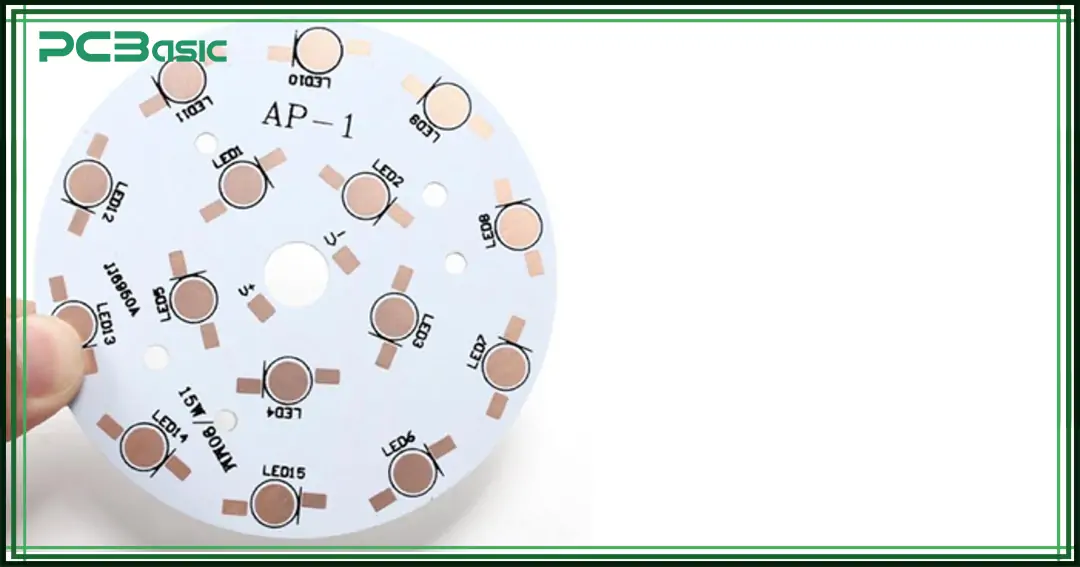
Designing an aluminum substrate PCB isn’t the same as working with standard FR4. There are different rules. And they matter.
Every design must consider how heat moves from components to the aluminum base. The dielectric layer should be as thin as possible. But it still needs strong insulation. Most use polymer-based dielectrics, sometimes with ceramic particles, for thermal enhancement. The thinner it is, the better the thermal flow—but not too thin. Safety margins matter.
Traces should be wider to handle higher currents. Sharp angles are avoided. Curved traces reduce stress points. Pads and vias need extra care. Through-hole vias can't penetrate the aluminum base without special drilling or isolation.
Most aluminum PCBs are single-sided. That’s because the metal core blocks electrical vias. If a multi-layer design is required, it demands special techniques like dielectric stacking or flexible layers.
Hot components go where the heat can move down fast. Keep them close to the center. Place low-power ICs further out. It's like building a heat map before the board exists.
Because aluminum can expand under heat, the surface finish needs to hold up. ENIG (Electroless Nickel Immersion Gold) and OSP (Organic Solderability Preservative) are common.
Aluminum PCB prototyping costs more than standard FR4. The tooling is different. So are the fabrication parameters. But prices have dropped in recent years. Thanks to demand from the automotive and LED sectors.
Aluminum is conductive. There’s no room for design errors. One wrong trace, and it shorts. Designers often add isolation slots or keep-out zones. These act like firebreaks.
You can't treat it like fiberglass. Aluminum dulls tools fast. CNC machines use carbide bits and special feed rates. Edge finishing is important. A rough edge can compromise fitment or create EMI issues.
Aluminum substrate PCBs have changed how we think about thermal design. They solve real problems. Heat, reliability, and space. Moreover, they do it without the bulk of external cooling.
In LED systems, they extend lifespan. In power electronics, they improve conversion efficiency. However, in vehicles, they handle vibrations and extreme heat. They are neither perfect nor universal. But for high-power, heat-intensive applications, they are often the best choice.
From aluminum PCB prototyping to full-scale production, success comes down to understanding the material’s strengths—and its limitations.
As demand for smaller, faster, and more efficient electronics grows, aluminum substrate PCBs will only become more relevant. Engineers should be prepared. Know the material. Finally, always design with heat in mind.
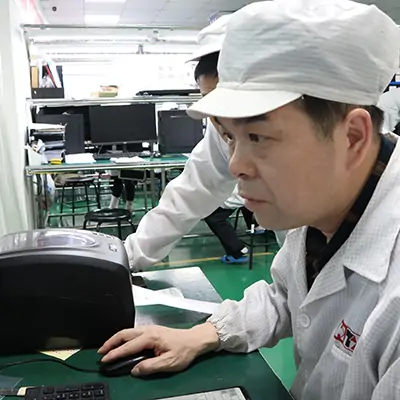
Assembly Enquiry
Instant Quote